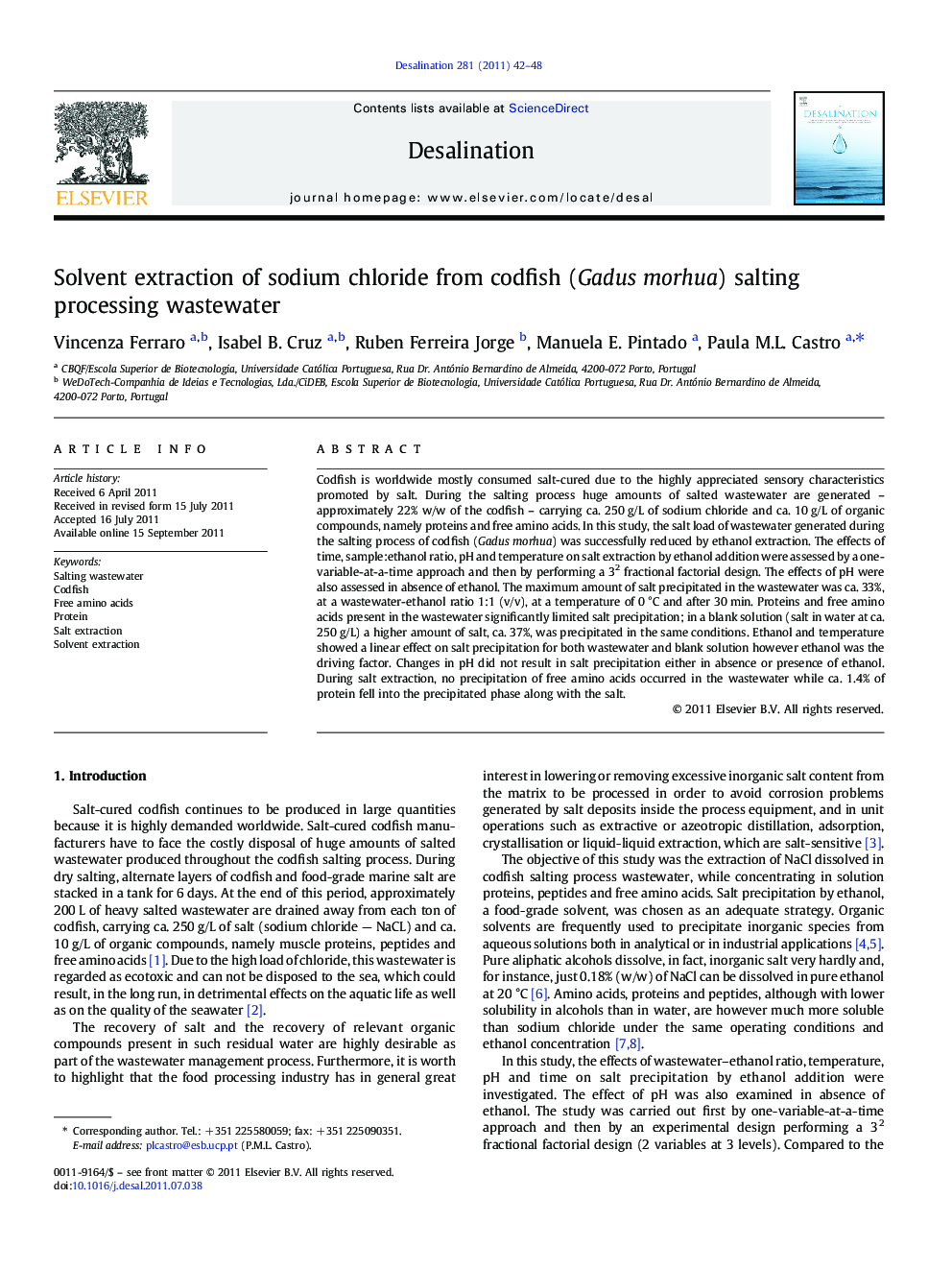| Article ID | Journal | Published Year | Pages | File Type |
|---|---|---|---|---|
| 624760 | Desalination | 2011 | 7 Pages |
Codfish is worldwide mostly consumed salt-cured due to the highly appreciated sensory characteristics promoted by salt. During the salting process huge amounts of salted wastewater are generated – approximately 22% w/w of the codfish – carrying ca. 250 g/L of sodium chloride and ca. 10 g/L of organic compounds, namely proteins and free amino acids. In this study, the salt load of wastewater generated during the salting process of codfish (Gadus morhua) was successfully reduced by ethanol extraction. The effects of time, sample:ethanol ratio, pH and temperature on salt extraction by ethanol addition were assessed by a one-variable-at-a-time approach and then by performing a 32 fractional factorial design. The effects of pH were also assessed in absence of ethanol. The maximum amount of salt precipitated in the wastewater was ca. 33%, at a wastewater-ethanol ratio 1:1 (v/v), at a temperature of 0 °C and after 30 min. Proteins and free amino acids present in the wastewater significantly limited salt precipitation; in a blank solution (salt in water at ca. 250 g/L) a higher amount of salt, ca. 37%, was precipitated in the same conditions. Ethanol and temperature showed a linear effect on salt precipitation for both wastewater and blank solution however ethanol was the driving factor. Changes in pH did not result in salt precipitation either in absence or presence of ethanol. During salt extraction, no precipitation of free amino acids occurred in the wastewater while ca. 1.4% of protein fell into the precipitated phase along with the salt.
► Food-grade ethanol allowed precipitation of salt from codfish processing wastewater. ► Maximum amount of salt precipitated in the wastewater was ca. 33%. ► Salt precipitation allows recovering proteins, peptides and amino acids. ► Proteins and free amino acids present in the wastewater limited salt precipitation.
